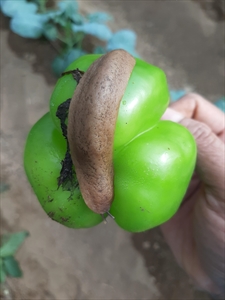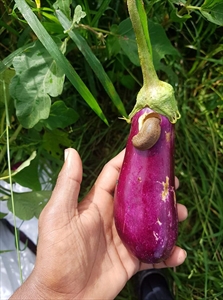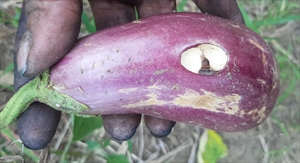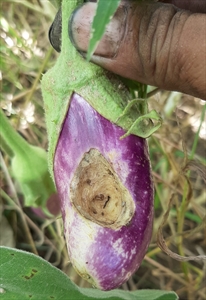- Worldwide. Africa (restricted), Asia (restricted), Southeast Asia (Malaysia, the Philippines), North, South, Central America, the Caribbean, Oceania. In Australia, Fiji, Guam, New Caledonia, Northern Marianna Islands, Vanuatu.
- Important invasive pest of vegetables; also attacks, ornamentals, tree crops, nursery plants, weeds. Spreads rat lung worm to humans.
- Greyish-brown, flattish with black markings, up to 70 mm long when moving (no stripe on the back). Nocturnal. Found under leaves, stones, on low trees in variety of habitats. Burrows deeply in dry times. Populations increase rapidly after long rains.
- Natural enemies: predatory snails and flatworms, but they should NOT be introduced without environmental impact studies. These generalists will annihilate local snails. Use Indian runner ducks (but note, this slug climbs trees).
- Biosecurity: many Pacific island countries are vulnerable.
- Cultural control: bare earth or sand around plots; collect and destroy; use beer traps to attract slugs.
- Chemical control: note, metaldehyde NOT recommended: toxic to livestock, pets and humans; use baits with iron phosphate, sodium ferric EDTA - effective and safer.
Pacific Pests, Pathogens and Weeds - Online edition
Pacific Pests, Pathogens, Weeds & Pesticides
Caribbean leatherleaf slug (407)
Caribbean leatherleaf slug; also known as the bean slug or the American brown slug.
Sarasinula plebeia
AUTHOR Grahame Jackson & Manu Mua
Information from Sarasinula plebeia. Wikipedia. (https://en.wikipedia.org/wiki/Sarasinula_plebeia); and Veronicellidae: Sarasinula spp. Terrestial Mollusc Tool. USDA, UF, Lucid. (http://idtools.org/id/mollusc/factsheet.php?name=Veronicellidae:%20Sarasinula%20spp.); and from Brodie G, Barker GM (2012) Sarasinula plebeia (Fischer, 1868). Family Veronicellidae. USP Introduced Land Snails of the Fiji Islands. Fact Sheet Series, No. 4. (https://www.researchgate.net/publication/265646912_Sarasinula_plebeia_Fischer_1868_Family_Veronicellidae).
Produced with support from the Australian Centre for International Agricultural Research under project HORT/2016/185: Responding to emerging pest and disease threats to horticulture in the Pacific islands, implemented by the University of Queensland and the Secretariat of the Pacific Community.











